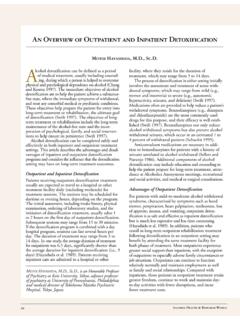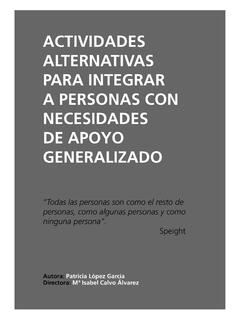Transcription of CAMBODIAN LABOR AND EMPLOYMENT LAW
1 Chapter 12 | 287 CAMBODIAN LABOR AND EMPLOYMENT LAWKONG Phallack*I. IntroductionThis article will give an overview and understanding of CAMBODIAN LABOR law; including its sources and historical development. It will also discuss issues related to LABOR discrimi-nation and dispute resolution systems; individual EMPLOYMENT ; collective bargaining; rep-resentation by entities other than trade unions; redundancy and transfers of undertakings; wages, hours and leaves; anti-discrimination; occupational safety and health, worker s compensation, pensions and benefits, and EMPLOYMENT of foreign Historical Background of CAMBODIAN LawCambodian LABOR law has evolved through five main stages, namely the pre-independence era, the post-independence eras of 1953 to 1970, 1970 to 1975, 1979 to 1992 , and 1993 to the The pre-independence era includes the periods before and during the French colonization, from the First Century to 1953.
2 During this period, there was no written LABOR law. Legal measures governing the relationship between employers and workers were first established under the 1920 Civil Code, then by a 1927 Sub-decree which set forth a 10 hour workday and other LABOR regulations established during the French colonial The Ministry of LABOR and Social Affairs was first established in 1951 by Royal Decree No 651 NS of December During the post independence era to 1970, the Dr. KONG Phallack is Dean and Professor of Law of Faculty of Law and Public Affairs, Pa a sa stra University of Cambodia (PUC); Managing Director and Attorney at Law of KhmerLex Legal Solu-tions, a locally established law firm; Chief arbitrator of the Arbitration Council.
3 He has handled 380 cases among 900 cases registered at the Arbitration Council. Dr. KONG Phallack has been selected to serve as a chairman of the Board of Director of the Arbitration Council Foundation; a member of Arbitration Panel of Kuala Lumpur Regional Centre for Arbitration (KLRCA), and a member of Inter Pacific Bar Association (IPBA). 1 According to the statement of October 25, 1998 written by SUY Sem, then Secretary of State, Ministry of Social Affairs, LABOR and Veteran Affairs (See LABOR Law Publication by World Bank, IBRD-IDF 2411, Rule of Law Development, LABOR Law Education of Women and Children), 2 Id. 3 Id. | Introduction to CAMBODIAN LawKONG Phallacksignificant events were the transfer of French administration to the CAMBODIAN government and the establishment of various other laws to broaden the scope of the existing LABOR From 1970 to 1975, the Khmer Republic amended the existing CAMBODIAN LABOR law, drafted a new LABOR law, and joined the International LABOR Organization5.
4 From 1979 to 1992 , the Ministry of Social Affairs and Disable Veterans was established by Decree No. 19 Kr. Ch of March 5, 1985 and the new LABOR law was promulgated by Decree Kr of October 13, From 1993 to the present, a number of LABOR laws and regulations such as the 1997 LABOR Law7, and the 2002 Law on Social Security have been created, and conventions of the International LABOR Organization have been ratified to meet the demands of Cambodia s market General Sources of LABOR LawThe main source of LABOR and EMPLOYMENT law in Cambodia is the 1997 LABOR Law and its first amendment in 2007, and the 2002 Law on Social Security. Furthermore, there are also a number of governmental regulations such as royal decrees, sub-decrees, prakas, decisions, circulars, and notice8 issued by the Royal Government of Cambodia, and par-ticularly by the Ministry of LABOR and Vocational Training.
5 Additionally, there are LABOR arbitral awards and other related laws in force such as Decree 38 on Contract and Other Liabilities which provides general rules of contract. The LABOR Law regulates the LABOR relationship between employees and employers and the socio-legal rights and obligations resulting from a LABOR relationship. All CAMBODIAN citizens and foreign nationals working in Cambodia are subject to the regulations of the LABOR Code. The LABOR Law specifically provides regulations on enterprise establishment, apprenticeships, LABOR contracts, collective LABOR agreements, general working conditions, specific working conditions for agricultural work, health and safety of workers, work re-lated accidents, placement and recruitment of workers, trade union freedom and worker representation in the enterprise, settlement of LABOR disputes, strikes and lockouts, LABOR administration, and the LABOR advisory committee.
6 The Law on Social Security provides a system of protection regarding work related accidents for workers under the scope of the LABOR law. LABOR arbitral awards of the Arbitration Council are considered a source of 4 Id. 5 Id. Cambodia ratified its membership of the ILO through Decree No. 467/71CE of April, 1971 6 Id. 7 Id. The 1997 LABOR Law promulgated by Decree No. CS/RKM/0397/01 of March 1997 with the kind assistance of the ILO, the French Ministry of LABOR , and AAFLI, the LABOR law was made based on the 1992 LABOR Law, and 1993 constitution 8 See, Dr. KONG Phallack, Overview Of CAMBODIAN Legal And Judicial System And Recent Effort For Legal And Judicial Reform, 2. Sources of Laws in Cambodia, 12 | 289 CAMBODIAN LABOR and EMPLOYMENT Lawthe LABOR law because the council has developed a consistent jurisprudence to fill in the gaps and ambiguities of the LABOR the realm of international legal standards of EMPLOYMENT and LABOR , Cambodia has ratified 13 ILO conventions, which have legal effect within Cambodia, including 8 fundamental ILO LABOR AdministrationAccording to the LABOR Law, the Ministry of LABOR and Vocational Training and its LABOR Departments at the capital.
7 Provincial and municipal levels bear the primary responsibility for the administration of LABOR inspections are assumed by the LABOR Inspectors and LABOR LABOR medical inspection is under the LABOR medical inspectors and they work closely with the LABOR Under the LABOR Law, the Ministry of LABOR and Vocational Training is required to establish a LABOR Advisory Committee whose primary mission is to study problems related to LABOR , the EMPLOYMENT of workers, wages, vocational training, the mobility of the LABOR force in the country, migrations, the improvement of the material and moral conditions of workers and matters of LABOR health and safety. The LABOR Advisory Committee consists of the Minister in Charge of LABOR , or his representative, who is the Chairperson; representatives from relevant ministries; and an equal number of representatives from the workers unions that are the most representative at the national level, and of representatives from the employers organizations that are the most representative at the national level14.
8 Participation of the Kingdom of Cambodia in activities of the International LABOR Organization shall be in consultation with representatives of employers and workers who are members of the LABOR Advisory Committee15. 9 Source, Arbitration Council: 10 Source, International LABOR Organization: The 13 conventions are: 1. C4 Night Work (Women) Convention, 1919 (1969); 2. C6 Night Work of Young Persons (Industry) Convention, 1919 (1969) ; 3. C13 White Lead (Painting) Convention, 1921 (1969) ; 4. C29 Forced Labour Convention, 1930 (1969) ;5. C87 Freedom of Association and Protection of the Right to Orga-nise Convention, 1948 (1999) ; 6. C98 Right to Organise and Collective Bargaining Convention, 1949 (1999) ; 7.
9 C100 Equal Remuneration Convention, 1951 (1999) ; 8. C105 Abolition of Forced Labour Convention, 1957 (1999) ;9. C111 Discrimination ( EMPLOYMENT and Occupation) Convention, 1958 (1999) ;10. C122 EMPLOYMENT Policy Convention, 1964 (1971) ;11. C138 Minimum Age Convention, 1973 (1999); 12. C150 Labour Administration Convention, 1978 (1999) ;and 13. C182 Worst Forms of Child Labour Convention, 1999 (2006) 11 LABOR Law and Sub-decree on the Organization and Functioning of the Ministry of LABOR Vocational Training and Prakas on the Establishment of LABOR Department. 12 LABOR Law, Art 343 13 LABOR Law, Art 349 14 LABOR Law, Art 351 Art 358 15 LABOR Law, Art 358290 | Introduction to CAMBODIAN LawKONG PhallackV. LABOR Dispute Resolution SystemThe LABOR Law provides for the basic structure of LABOR dispute resolution in Chapter XII and Chapter XVII.
10 LABOR disputes are classified into individual LABOR disputes and collec-tive LABOR disputes. The LABOR Law does not call for both collective and individual LABOR disputes to be resolved initially through direct negotiation between the disputing parties before submission of the disputes to a third party. However the Law does provide for several different third-party dispute resolution an individual LABOR dispute, prior to any judicial action, either party can refer the case to the LABOR Inspector of his province or municipality or capital for a preliminary conciliation. On receipt of the complaint, the LABOR Inspector shall inquire of both par-ties to elicit the subject of the dispute and then shall attempt to conciliate the parties on the basis of relevant laws, regulations, collective agreements, or the individual LABOR con-tract.




